The Story of Seeds
October 18, 2019
By Ann Thelen
An Iowa Food & Family Project Food U event explored the powerful lifecycle of corn and soybeans — from seed development to harvest technology to end products — and the importance of these crops in communities across the state.
When a seed is planted – both literally and figuratively – you never know exactly how it will grow and flourish. Often, when planting backyard vegetable or flower gardens, the seeds are no longer visible because they are already a living plant. It’s easy to overlook the mighty power of tiny seeds.
In agriculture and the food chain, before a seed ever meets the soil that will allow it to thrive, its development is fascinating. For farmers and companies, the life cycle of transforming seeds into viable crops for food, feed and fuel, is a continuous circle of technology in action.
During a recent Iowa Food & Family Project Food U event, two dozen food-minded consumers learned about the transformation of seeds from several perspectives. The group visited Latham Hi-Tech Seeds; met April Hemmes, a corn and soybean farmer, and discovered how tapping into the curiosity of children is a vital seed for agriculture.
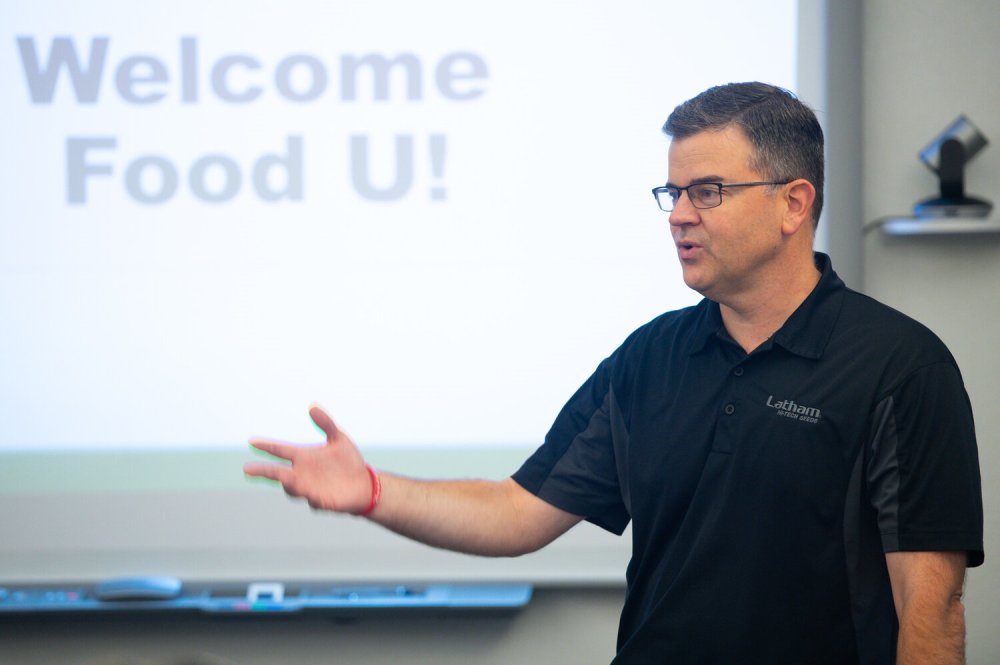
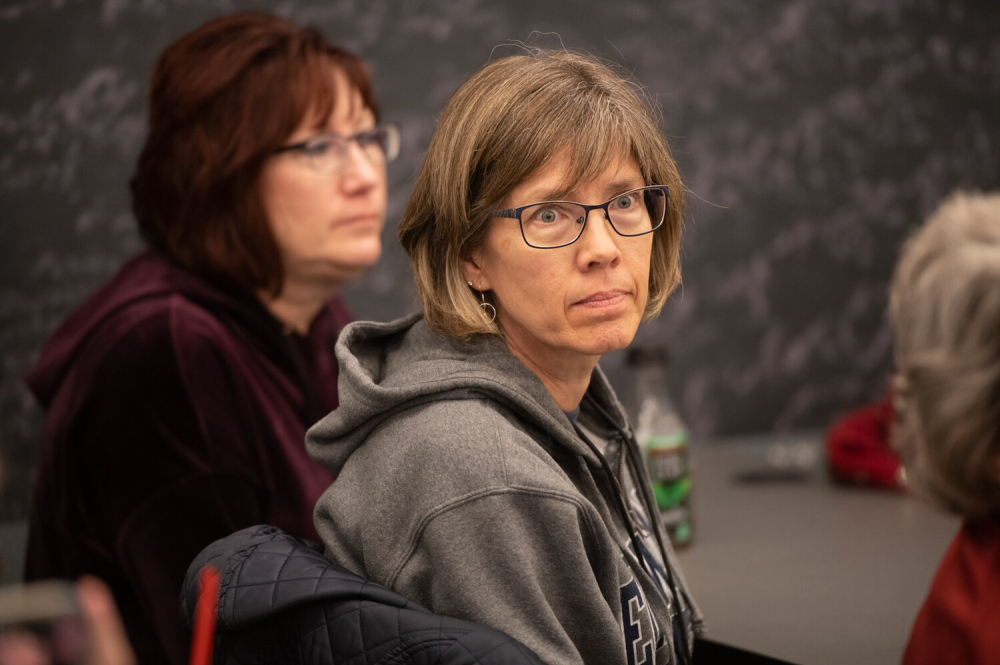
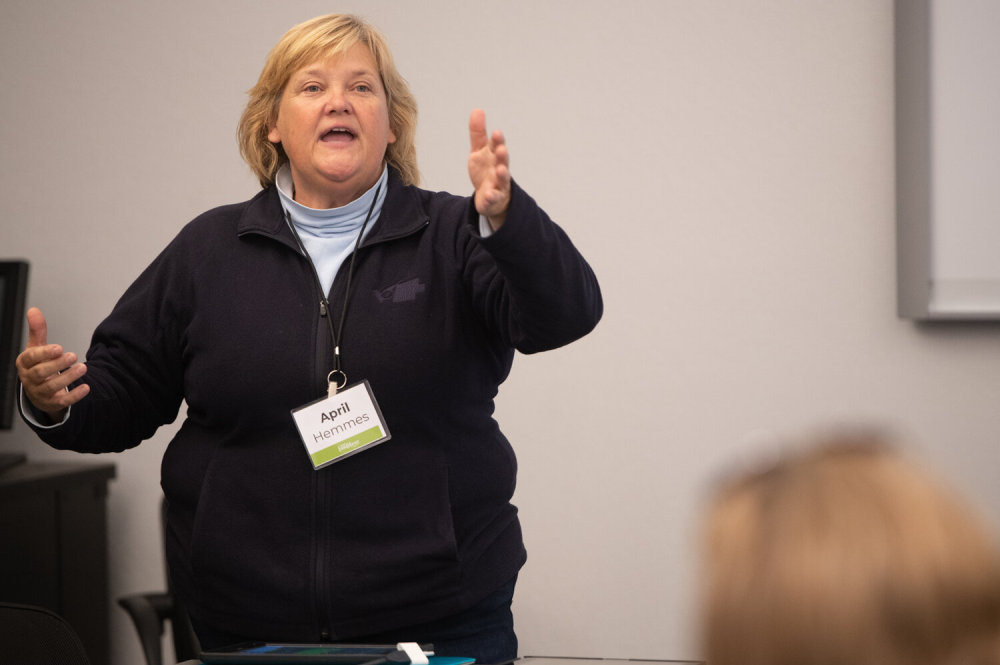
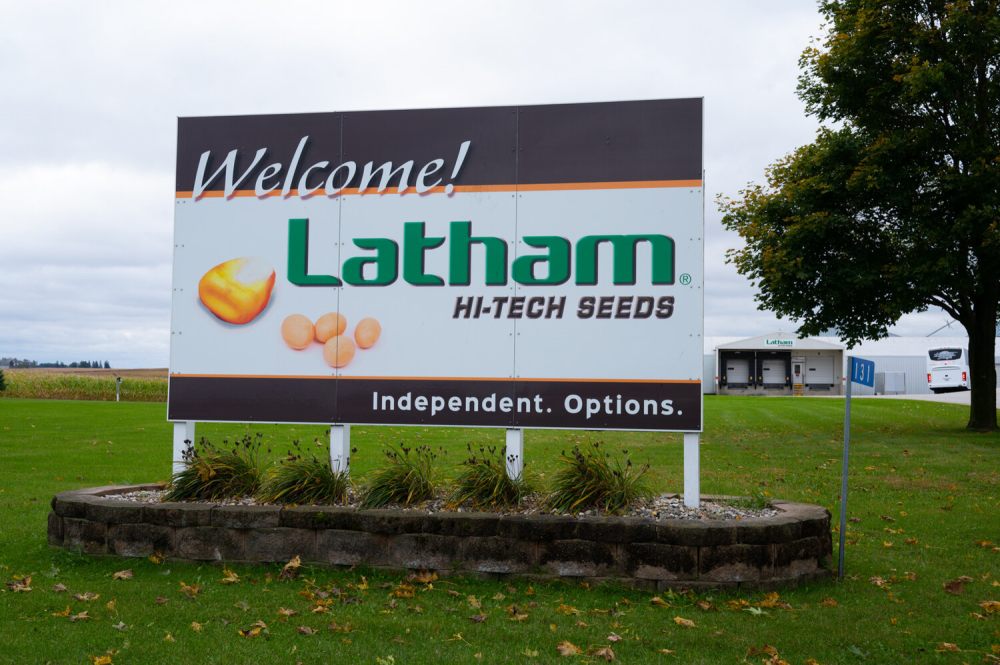
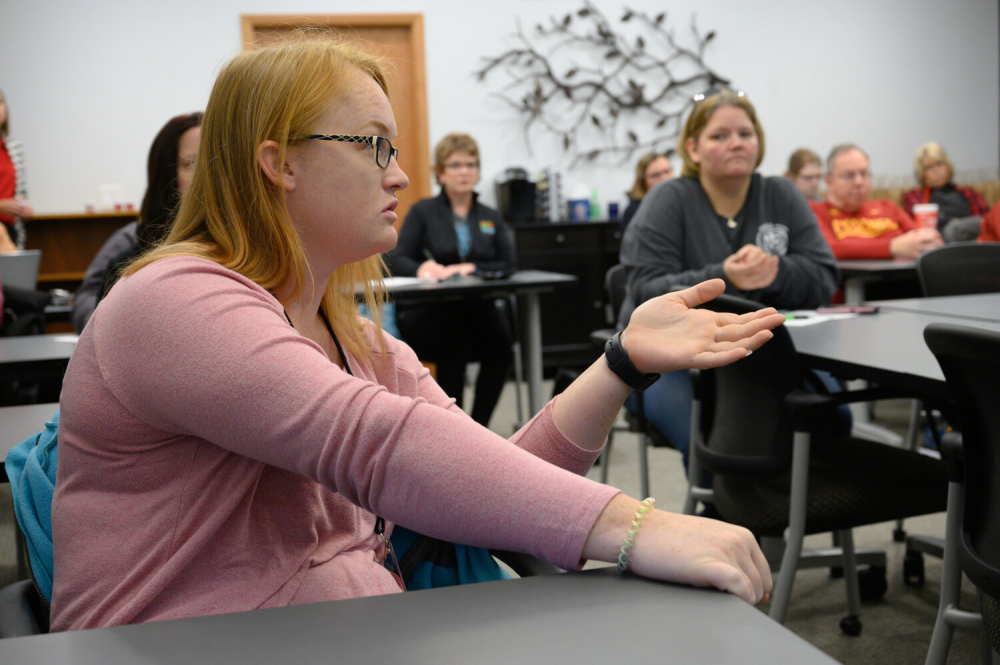
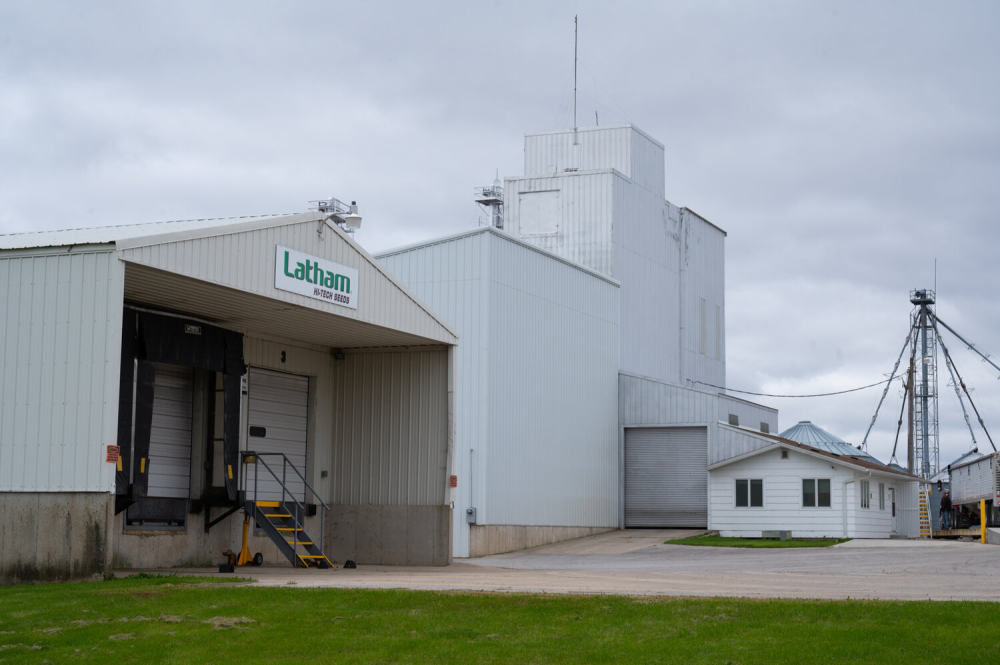
Rooted in Family Values
Latham Seeds is an independent seed company in Alexander. The third-generation leaders are proud to carry on a 70-year family tradition bringing world-class technology home to rural communities. The business is headquartered on the Latham family’s century farm, and the founder’s former family home is now the company’s office building.
The company takes great pride in breeding and selecting high-performing hybrids and brands, offering corn, soybean, alfalfa and cover crop products – all designed to grow in this specific six-state region of the country.
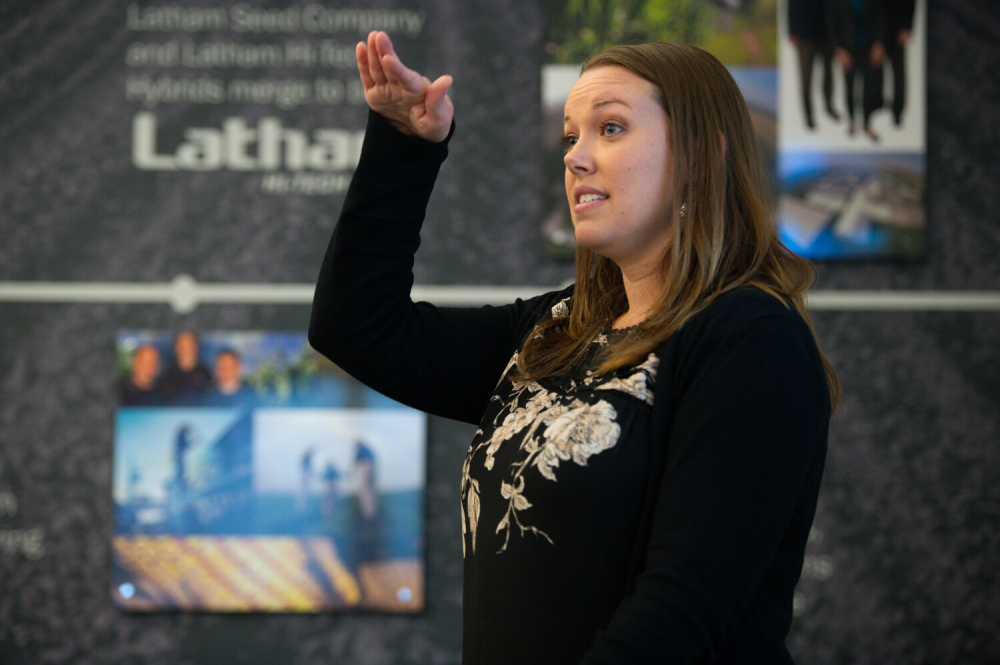 Beyond a variety of seed products, Latham’s team of product and research specialists work year-round to help farmers maximize productivity in the field.
Beyond a variety of seed products, Latham’s team of product and research specialists work year-round to help farmers maximize productivity in the field.
Laura Cunningham, marketing manager for Latham, describes the multistep life cycle of a Latham® soybean. The product development life cycle for a new variety of soybeans can be anywhere from 3 to 15 years!
Step 1: Planting seeds. Latham’s 35 partner farmers grow the company’s commercial seed. The seeds vary slightly depending on the state’s or region’s specific growing needs, such as soil and weather conditions. Each farmer plants around one bag of seed per acre, which equates to 140,000 seeds per football field-sized area.
Step 2: Harvesting seeds. After growing the seeds and when it’s time to harvest, growers bring a sample of the seeds to Latham. At the plant, the seeds are hand probed for appearance and moisture levels. If approved, the soybeans are ready to be harvested and delivered to Latham. During the growing season, the one bag of seed exponentially multiplies. For every bag of seed that goes out during planting season, 50 bags (each with 140,000 seeds) come back in at harvest. After they’re conditioned, those seeds are sold to farmers for the following year’s planting season.
Step 3: Checking quality. The seeds go through a three-step conditioning process to remove debris (such as sticks) and cracked pods, to sort for misshapen seeds, and to sort for density. If a seed fails to meet quality standards during the conditioning process, it is removed and sold into the traditional soybean market.
Step 4: Creating healthy seeds. Seeds are treated with a fine coating to protect from fungus and harmful insects. This step reduces disease and insect pressure, cutting down the amount of fungicide and insecticide that are needed on the crops. The goal is to create a healthy seed that ultimately leads to the best food possible.
Step 5: Turning seeds into grain. Farmers who buy Latham’s seeds plant them in the spring and grow grain.
Step 6: Harvesting for food. Grain is harvested. A typical Iowa harvest can take up to six weeks, with many people involved. Harvested grain is stored or sold.
“The majority of soybeans in Iowa are processed into two main products – soybean meal for animal feed or soybean oil, which can be food grade or used in household products, such as crayons, Cunningham explains.
“Approximately 20% of Iowa’s corn is converted into animal feed and nearly 40% is sold to ethanol plants. Another 12% is grown for food and industry uses.”
Because Iowa’s corn and soybeans are a significant component of the feed for pigs, cows and turkeys, the feed must start as high-quality as possible. Ultimately, it makes its way to consumers’ dinner tables. It’s comforting to know the dedication, pride and commitment that goes into every single soybean or kernel of corn.
“In modern-day farming, so much knowledge and time go to making a positive impact on the environment while finding the most efficient means. It’s impressive,” says Shirley MacLeod, a Food U participant from Ankeny.
Seeds and Soil Matter
April Hemmes is a fourth-generation corn and soybean farmer who serves on both the Iowa Soybean Board and United Soybean Board. She raises 1,000 acres of crops on her family’s Century Farm near Hampton. Often viewed as the reverse of the typical farm family, her husband, Tom Kazmerzak, works off the farm.
As a farmer who grows Latham soybeans, April is passionate about continuous improvement, whether that’s in marketing crops, improving yields or implementing new technologies in the field.
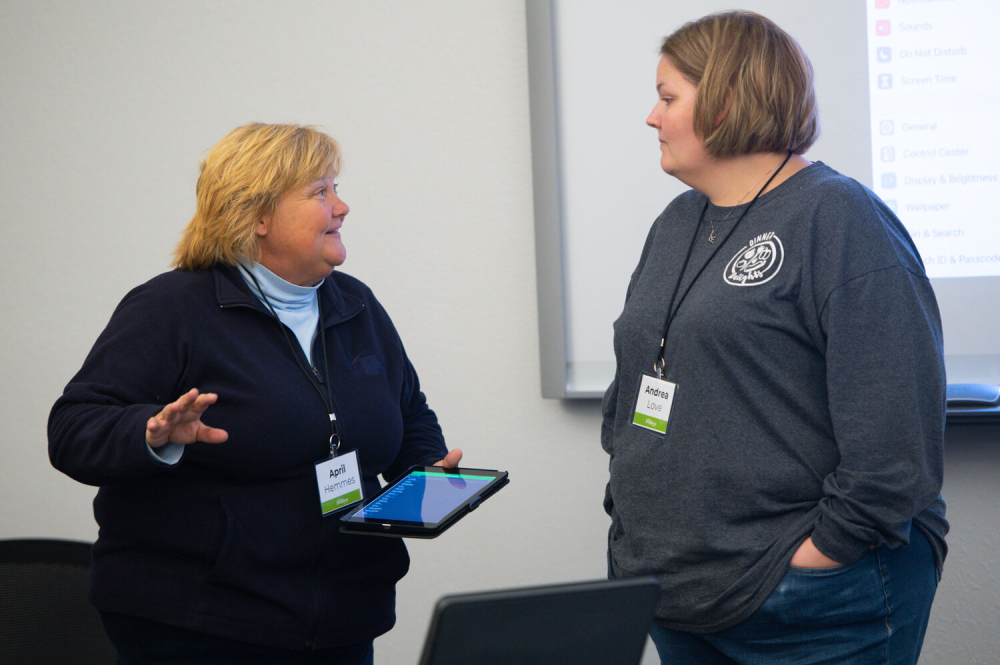 “I farm in an area that is highly erodible land; it sits where a glacier once went through,” Hemmes says. “Because of this, I spend a lot of time working to keep my soil in place and growing what will perform best in the conditions. What works well in one field may be different in an adjacent field.”
“I farm in an area that is highly erodible land; it sits where a glacier once went through,” Hemmes says. “Because of this, I spend a lot of time working to keep my soil in place and growing what will perform best in the conditions. What works well in one field may be different in an adjacent field.”
Cover crops are an important tool in Hemmes’ crop plan. Cereal rye has been the crop of choice because the roots are about three times as long as the plant is tall above the soil. After harvest, the cereal rye is planted, and the soil stays active until the spring by nourishing the cover crops’ roots all winter long.
“What one crop can put into the soil, another crop can use,” she explains. “Soybeans add nitrogen back into the soil, so it’s important I keep that valuable nitrogen in my soil.”
Hemmes is meticulous about gathering data on her farm and putting it to work. With significant advancements in technology in recent years, she likes to say she can farm by the square foot. She knows what parts of her fields need more fertilizer and areas that need less. By planting treated seeds, she reduces her input costs for fungicides and insecticides.
“As a native Iowan, you grow up seeing corn and soybean fields and it becomes part of the background,” says Erika Mahoney, a Food U participant from Urbandale. “After participating in this activity, I learned about what it takes for a farmer to continue to produce thriving crops.
“It’s not just a process as simple as ‘plant, water, harvest.’ Farmers are in constant worry of what the weather is – and will be – how much moisture is in the field, when is the frost coming, what time is ideal for harvesting, and so much more. It is a game of statistics and calculated risk that is unfathomable to us non-farmers.”
Seeds of Learning for the Next Generation
Shannon Latham is vice president of Latham Hi-Tech Seeds. She’s also a mom and an authentic “farm girl” who calls herself a lifelong Girl Scout. Her experiences led her to create Enchanted Acres, a place where families can escape reality for a few hours and enjoy spending time together in the great outdoors.
Through activities at Enchanted Acres or one-on-one conversations, Shannon is always looking for opportunities to inspire an understanding of agriculture and learn from others.
“When my children were in preschool, we went on a field trip to a pumpkin patch,” she explains. “During the trip, agriculture was never discussed. I saw it as a missed opportunity to foster an understanding of agriculture in children – the seeds of our next generation. My idea for Enchanted Acres was born out of that field trip.”
Now in its eighth season of operation in Sheffield, Enchanted Acres is open every fall with games for the entire family, including hayrides, pumpkin decorating and craft workshops. Visitors can experience a slice of farm life by feeding goats or stepping into the pumpkin patch. These hands-on experiences spark conversations about how food is grown and raised.
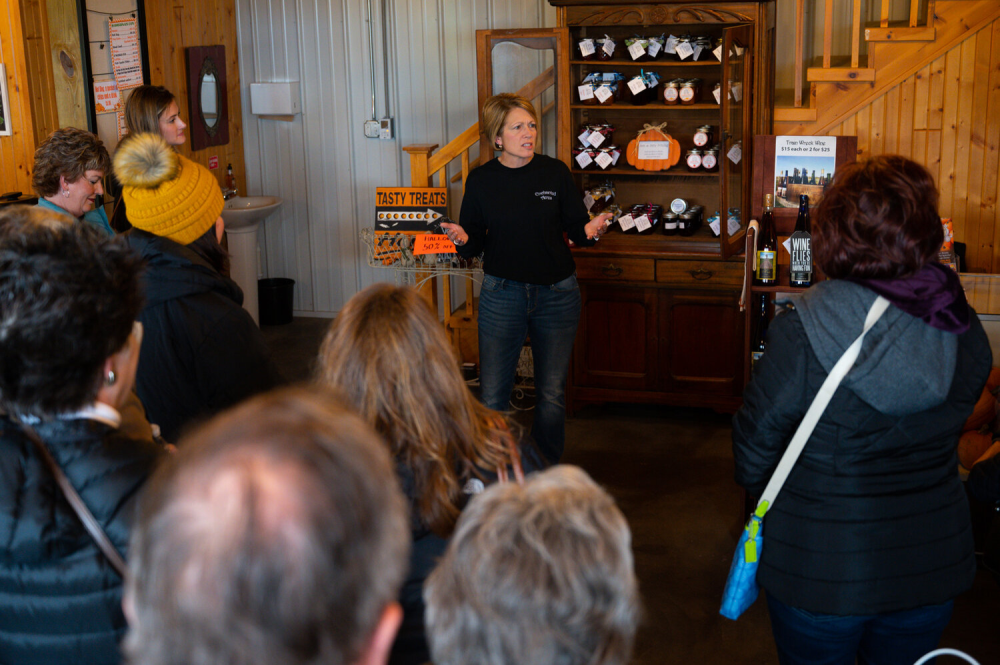
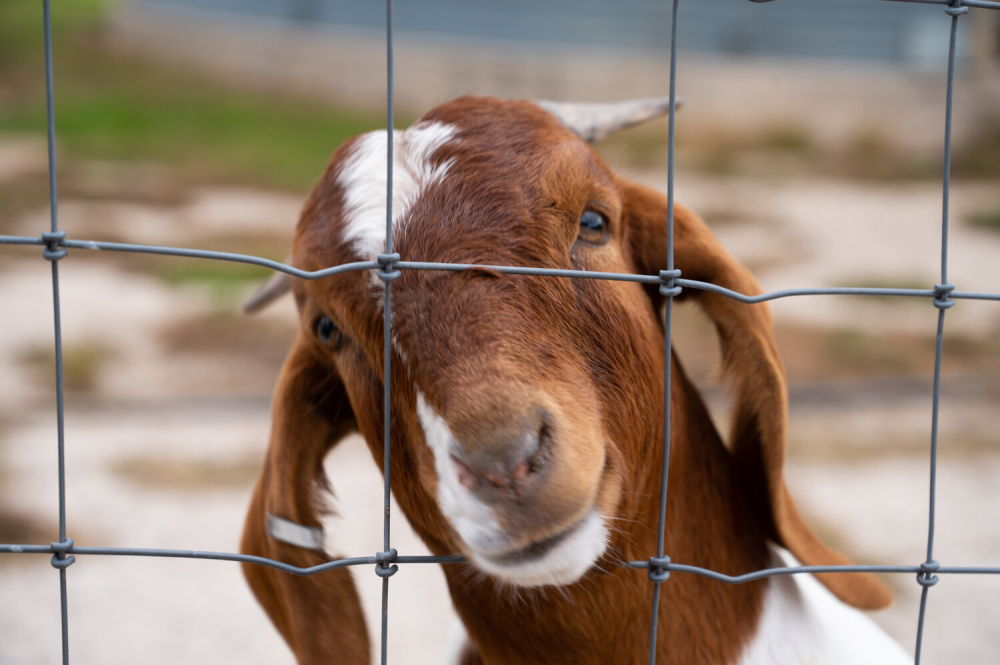
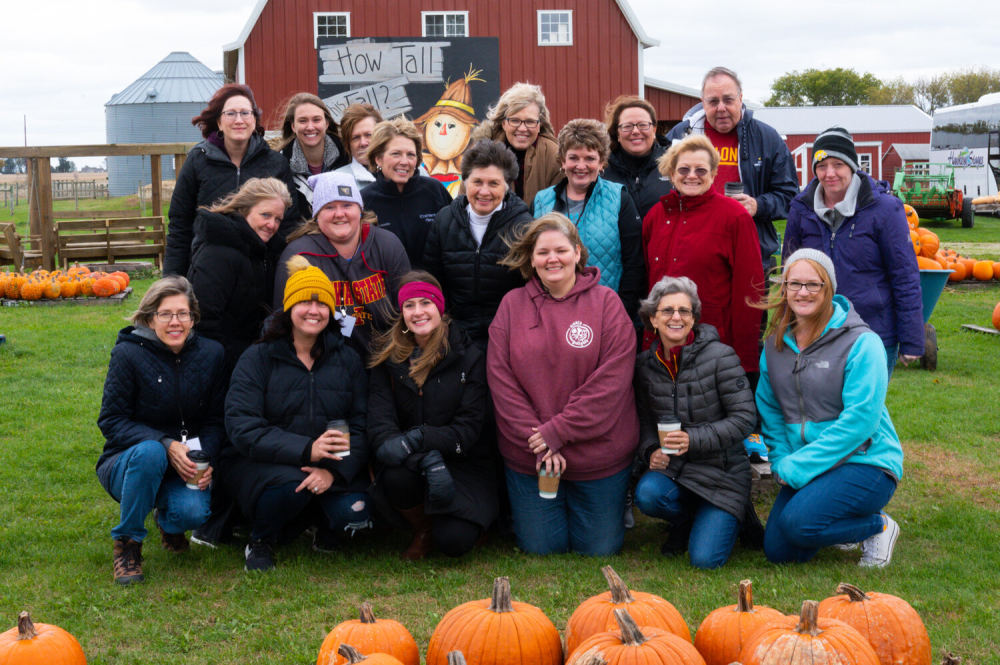
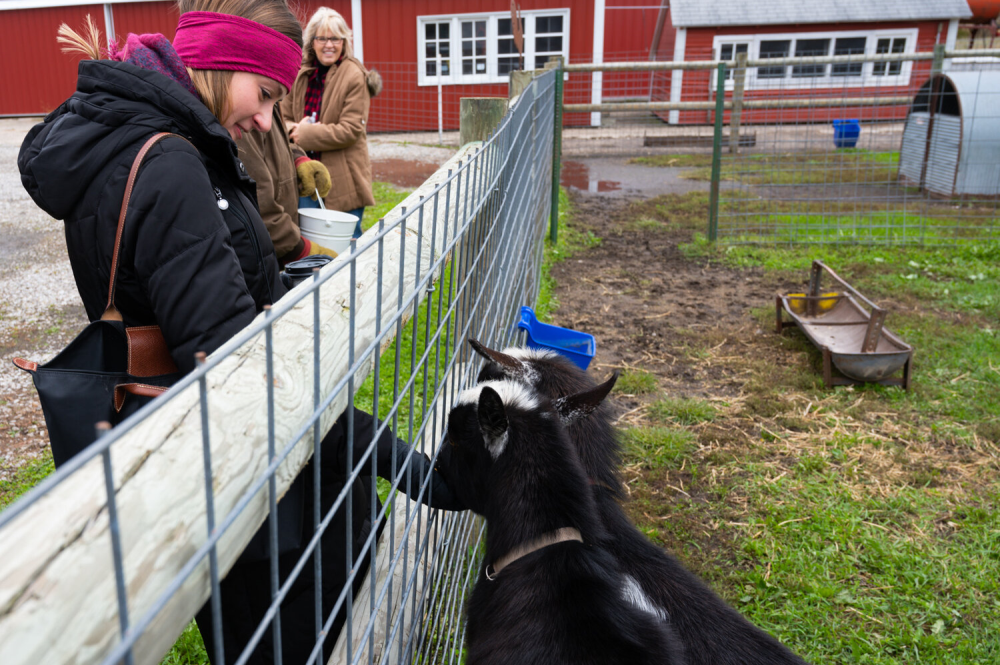
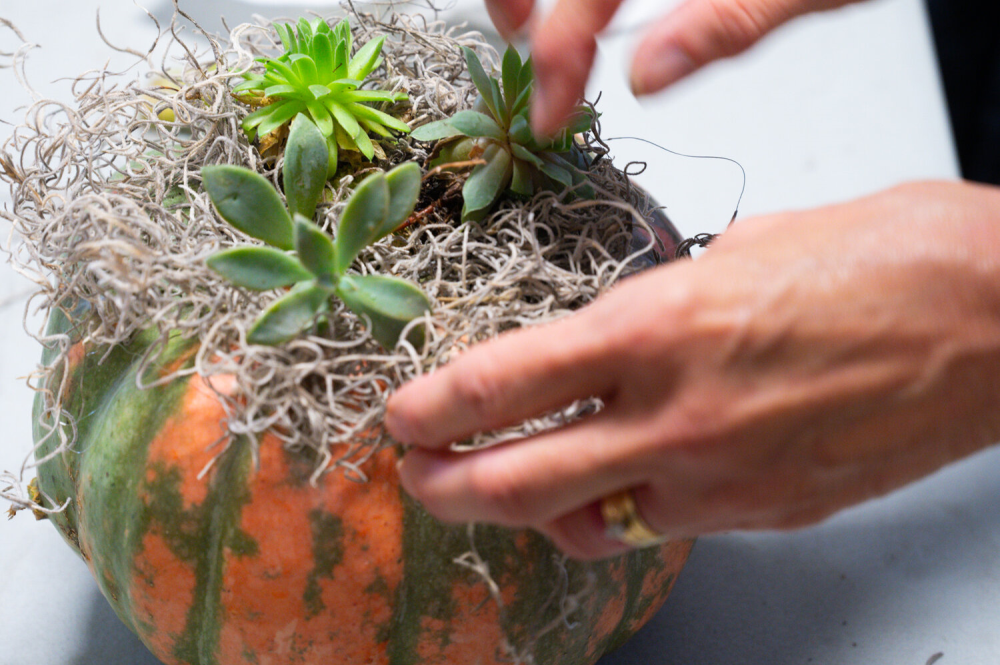
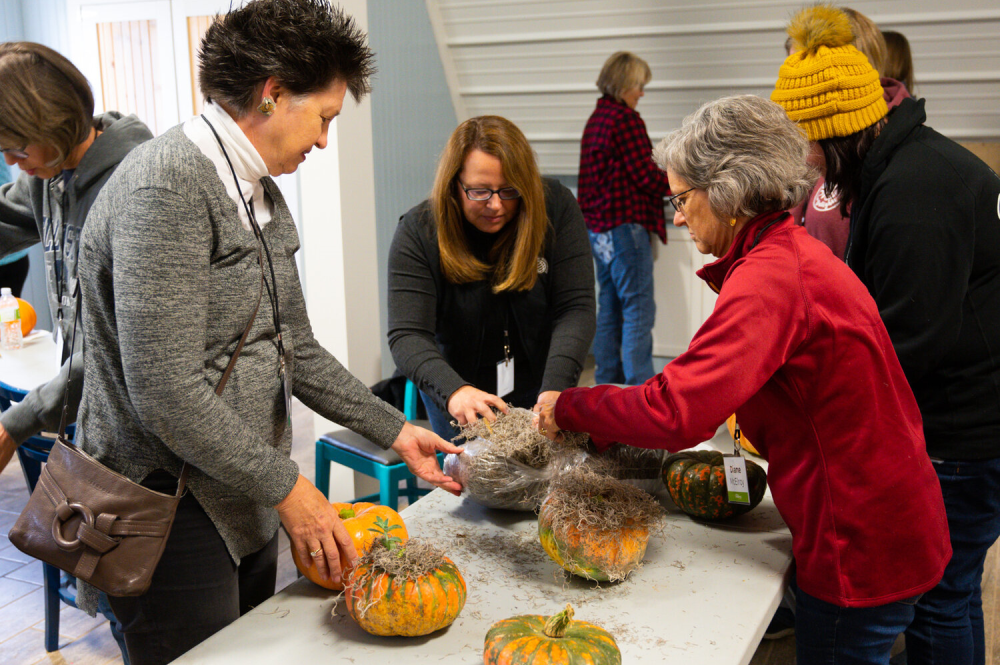
About Food U
Food U is an exclusive program for Iowa Food & Family Project (Iowa FFP) Champions. Throughout the year, Iowa FFP Champions – individuals who want to take a proactive role in learning more about all things food and farming – are invited to participate in special weekday learning activities. The activities include business and farm tours and meeting with individuals and groups who are involved in agriculture. All Iowa FFP Champions are volunteer participants. Learn more at www.iowafoodandfamily.com/about/food-u.